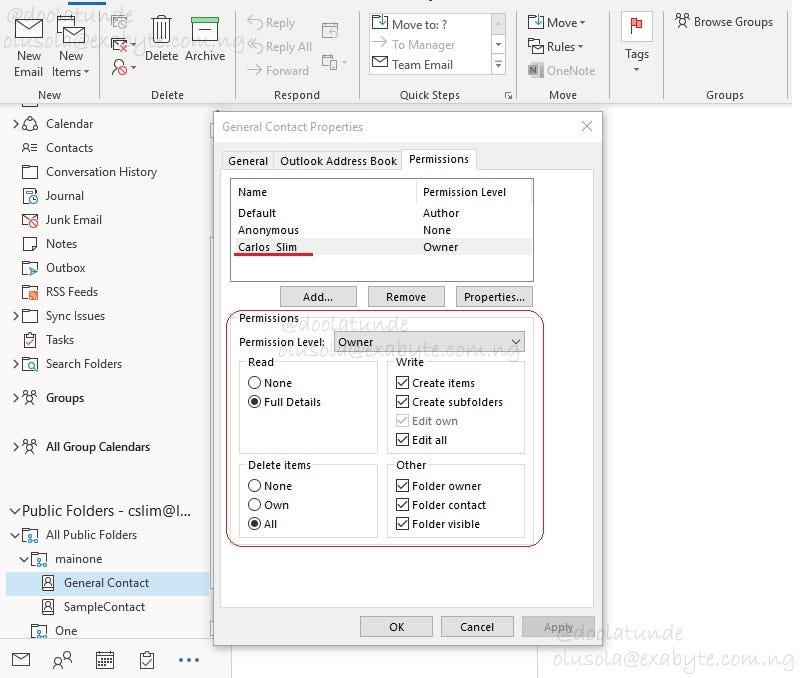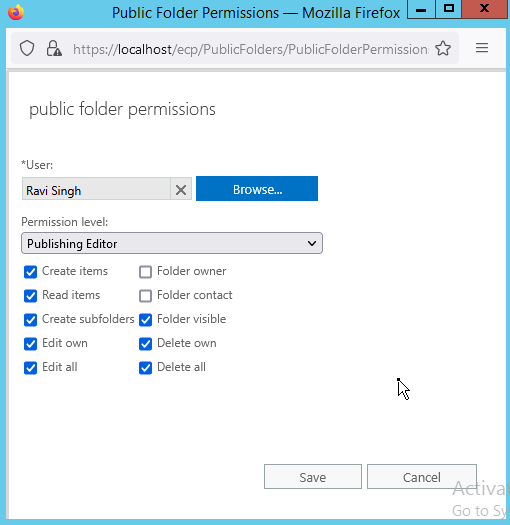

Click Back to make configuration changes. Click Remove to remove the user's permissions. On the Remove Users page, review your configuration settings. Click Add to select the user you want to remove, and then click Next.

On the Select Users page, you can select users from whom you want to remove their permissions. On the Specify Action page, click Remove users to remove users from folders to which they have permissions, and then click Next. This option is available only if the public folder you're modifying has one or more child public folders.

#Edit exchange public folder permissions update
Update client permissions Click this button to update the client access permissions for this public folder.Īpply client permission changes to this folder and all its subfolders Select this check box if you want the changes that you make to the selected public folder to apply to all of the child public folders. On the Introduction page, complete the following fields: In the action pane, click Manage Settings. In the result pane, click the public folder you want to configure. In the public folder tree of the Public Folder Management Console, expand Default Public Folders, and then click the parent public folder of the public folder you want to configure. In the result pane, double-click Public Folder Management Console. To see what permissions you need, see the "Public folder client permissions" entry in the Mailbox Permissions topic. You need to be assigned permissions before you can perform this procedure. Use the Public Folder Management Console to add public folder permissions for a client user Looking for other management tasks related to public folder permissions? Check out Managing Public Folder Permissions. Therefore, if you use the AddUsersToPFRecursive.ps1 script, and the user already has one of the access rights that you're trying to grant, a warning will appear stating that the current access rights will be removed before new access rights are granted. A status of Failed indicates that the task wasn't completed.If a client user already has a specific access right to a public folder, you can't add the same access right again.



 0 kommentar(er)
0 kommentar(er)
